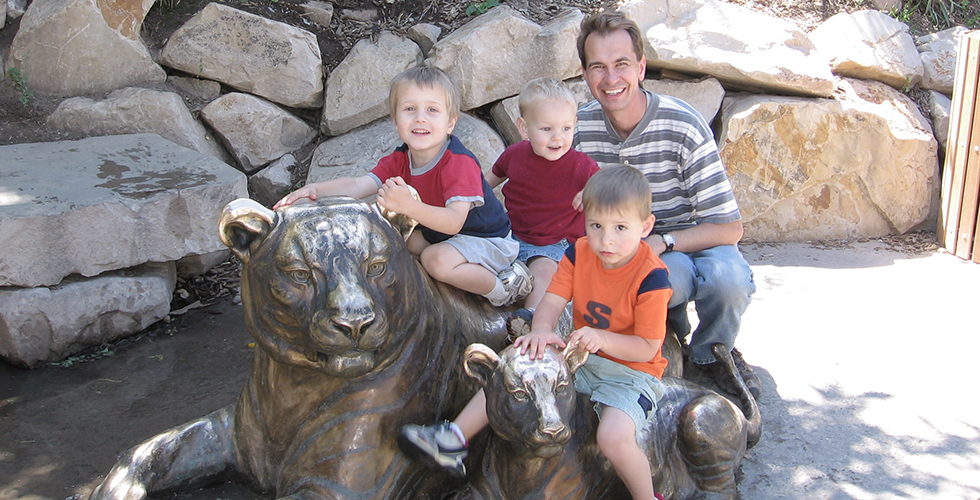
Photo courtesy of Derek Hullinger
“Physics” and “easier to understand” aren’t phrases that ordinarily appear together, but that’s what BYU alumnus Derek Hullinger is trying to accomplish.
“I love to make things better,” Hullinger said. “I like saying, ‘We could make that just a little bit faster by doing this,’ or ‘We could make it a little bit easier to understand by doing this.’”
Hullinger’s interest in physics started before he was a student at BYU.
“When I was in high school, I took a physics class and absolutely loved it,” Hullinger said. “I liked math before that, but I loved how physics showed me how I could use math to explain things that you see in the world around you.”
That initial interest pushed Hullinger (BS ‘97 Physics, MS ’00 Physics, Brigham Young University; PhD ’05 Physics, University of Maryland) to pursue three degrees and eventually a career in physics.
Shortly after receiving his bachelor’s in physics, Hullinger worked with NASA on the Swift Burst Alert Telescope project. The telescope’s purpose was to study gamma ray bursts, or powerful explosions of stars in distant galaxies.
“My job was to come up with a mathematical model to describe the relationship between the energy of each gamma-ray photon that is absorbed by the telescope’s detectors and the electrical signal produced by the detectors,” Hullinger said.
Hullinger currently works as a systems engineer at IMSAR. IMSAR develops and manufactures Synthetic Aperture Radars (SAR), a radar system that can produce detailed images of large areas.
“Imagine this radar sitting in the sky, 3,000 feet up,” Hullinger said. “It sends out a pulse of microwave radiation, and the pulse bounces off anything it comes in contact with. The ‘echoes’ come back to the radar and tell it how far away different objects are.”
Hullinger’s work at IMSAR involves developing new types of radar systems and improving those that have already been developed.
“Our company has found a way to make these devices incredibly small, incredibly low power, and incredibly cost effective,” Hullinger said. “They can be flown on small, unmanned vehicles, which is a first for synthetic aperture radar.”
Hullinger said his time at BYU prepared him for the work he’s done, particularly by teaching him how to learn.
“When I first began working at IMSAR, I didn’t know anything about radar systems,” Hullinger said. “But I did know how to learn about radar systems.”
More Information on This Article
News and Events














